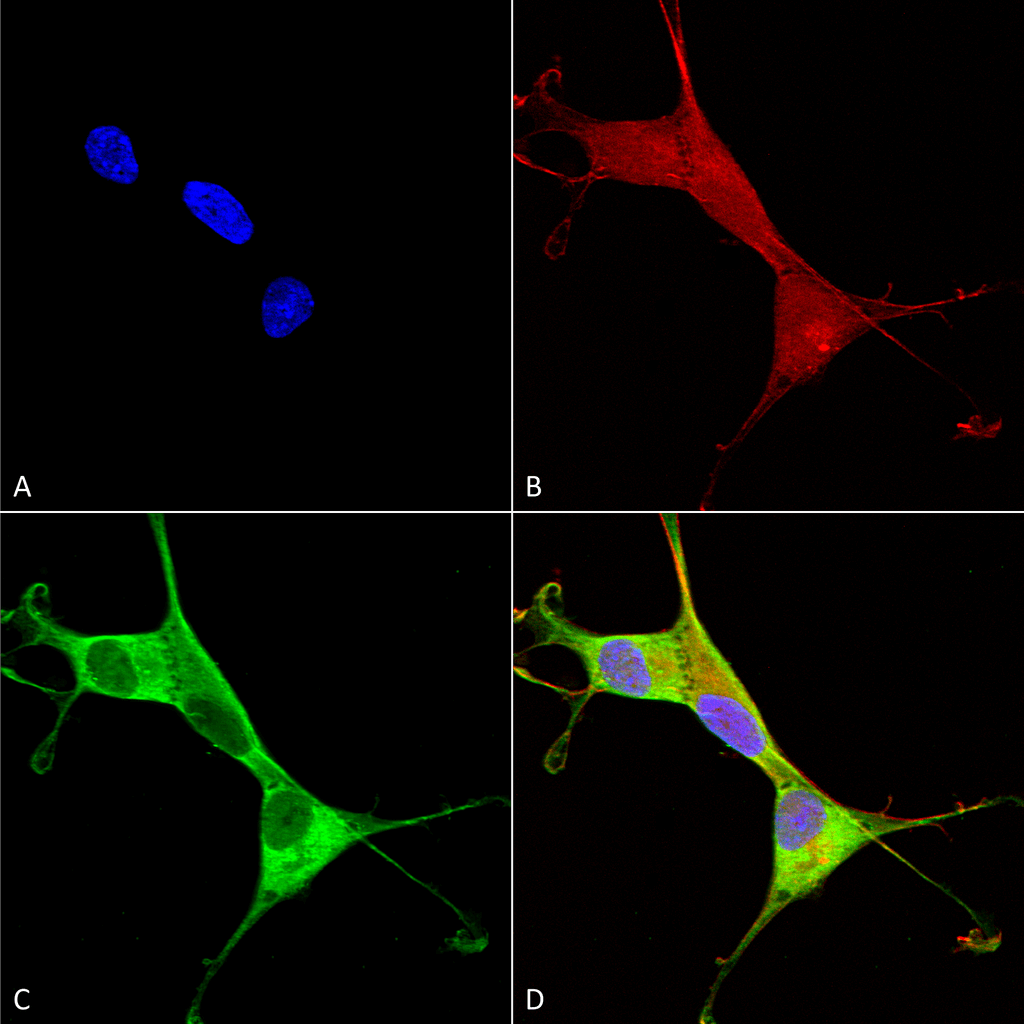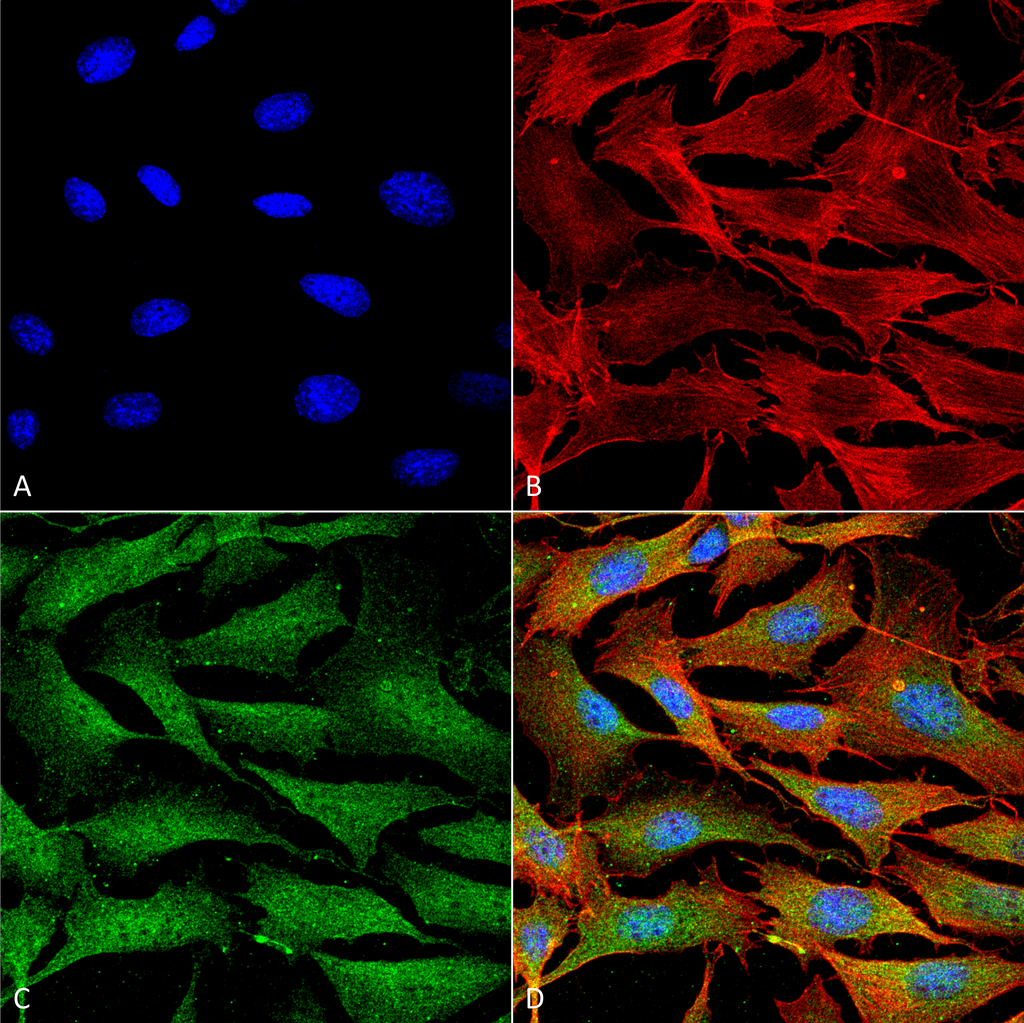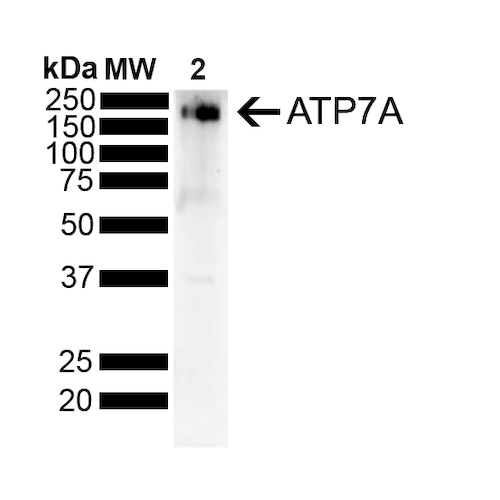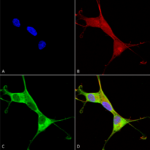Properties
| Storage Buffer | PBS pH7.4, 50% glycerol, 0.09% sodium azide *Storage buffer may change when conjugated |
| Storage Temperature | -20ºC, Conjugated antibodies should be stored according to the product label |
| Shipping Temperature | Blue Ice or 4ºC |
| Purification | Protein G Purified |
| Clonality | Monoclonal |
| Clone Number | L60/4 (Formerly sold as S60-4) |
| Isotype | IgG2b |
| Specificity | Detects ~180kDa in rat brain membrane preparations. |
| Cite This Product | StressMarq Biosciences Cat# SMC-398, RRID: AB_11232613 |
| Certificate of Analysis | 1 µg/ml of SMC-398 was sufficient for detection of Copper-transporting ATPase1 in 20 µg of rat brain lysate by colorimetric immunoblot analysis using Goat IgG:HRP as the secondary antibody. |
Biological Description
| Alternative Names | ATP7A Antibody, ATP 7A Antibody, ATPase Cu transporting Antibody, DSMAX Antibody, FLJ17790 Antibody, MC1 Antibody, MC 1 Antibody, MK Antibody, MNK Antibody, OHS Antibody, Copper pump 1 Antibody, Menke Antibody, OTTHUMP00000062077 Antibody, SMAX3 Antibody, ATPase copper transporting alpha polypeptide Antibody, ATPase Cu++ transporting alpha polypeptide (Menkes syndrome) Antibody, Copper transporting ATPase 1 Antibody, Cu++ transporting P type ATPase Antibody, Menkes disease associated protein Antibody, Menkes syndrome Antibody |
| Research Areas | Cell Signaling, Neurodegeneration, Neuroscience |
| Cellular Localization | Cell membrane, Cytoplasm, Endoplasmic Reticulum, Golgi apparatus, Trans-golgi network membrane |
| Accession Number | NP_000043.3 |
| Gene ID | 538 |
| Swiss Prot | Q04656 |
| Scientific Background | The copper efflux transporters ATP7A and ATP7B sequester intracellular copper into the vesicular secretory pathway for export from the cell. ATP7A (also known as Copper-transporting ATPase 1) functions as a transmembrane copper-trans locating P-type ATPase and plays a vital role in systemic copper absorption in the gut and copper reabsorption in the kidney. Polarized epithelial cells such as Madin-Darby canine kidney cells are a physiologically relevant model for systemic copper absorption and reabsorption in vivo. Although ATP7A is not detectable in most normal tissues, it is expressed in a considerable fraction of many common tumor types. Increased expression of ATP7A renders cells resistant to cisplatin and carboplatin. Mutations in the ATP7A gene result in Menkes disease, which is fatal in early childhood. Mutations in the ATP7B gene lead to the autosomal recessive disorder, Wilson disease, characterized by neurological symptoms and hepatic damage. |
| References |
1. Samimi G., et al. (2003) Clin. Cancer Res. 9: 5853-9. 2. Samimi G., et al. (2004) Mol Pharmacol. 66: 25-32. 3. Greenough M., et al. (2004) Am. J. Physiol. Cell Physiol. 287: C1463-71. 4. Song, I.S., et al. (2004) Mol. Cancer Ther. 3: 1543-1549. 5. van Dongen, E.M., et al. (2004) Biochem. Biophys. Res. Commun. 323: 789-795. 6. Samimi, G., et al. (2004) Mol Pharmacol 66: 25-32. 7. Morgan, C.T., et al. (2004) J. Biol. Chem. 279: 36363-36371. 8. Barnes, N., et al. (2005) J. Biol. Chem. [Epub]. |
Product Images

Immunocytochemistry/Immunofluorescence analysis using Mouse Anti-Copper Transporting ATPase 1 Monoclonal Antibody, Clone L60/4 (SMC-398). Tissue: Neuroblastoma cells (SH-SY5Y). Species: Human. Fixation: 4% PFA for 15 min. Primary Antibody: Mouse Anti-Copper Transporting ATPase 1 Monoclonal Antibody (SMC-398) at 1:100 for overnight at 4°C with slow rocking. Secondary Antibody: AlexaFluor 488 at 1:1000 for 1 hour at RT. Counterstain: Phalloidin-iFluor 647 (red) F-Actin stain; Hoechst (blue) nuclear stain at 1:800, 1.6mM for 20 min at RT. (A) Hoechst (blue) nuclear stain. (B) Phalloidin-iFluor 647 (red) F-Actin stain. (C) Copper Transporting ATPase 1 Antibody (D) Composite.

Immunocytochemistry/Immunofluorescence analysis using Mouse Anti-Copper Transporting ATPase 1 Monoclonal Antibody, Clone L60/4 (SMC-398). Tissue: NIH 3T3 (NIH 3T3). Species: Mouse. Fixation: 4% Formaldehyde for 15 min at RT. Primary Antibody: Mouse Anti-Copper Transporting ATPase 1 Monoclonal Antibody (SMC-398) at 1:100 for 60 min at RT. Secondary Antibody: Goat Anti-Mouse ATTO 488 at 1:200 for 60 min at RT. Counterstain: Phalloidin Texas Red F-Actin stain; DAPI (blue) nuclear stain at 1:1000, 1:5000 for 60 min at RT, 5 min at RT. Localization: Endoplasmic Reticulum, Cytoplasm, Golgi Apparatus, Trans-Golgi Network Membrane, Cell Membrane. Magnification: 60X. (A) DAPI (blue) nuclear stain. (B) Phalloidin Texas Red F-Actin stain. (C) Copper Transporting ATPase 1 Antibody. (D) Composite.

Western Blot analysis of Rat Liver showing detection of ~180 kDa Copper Transporting ATPase 1 protein using Mouse Anti-Copper Transporting ATPase 1 Monoclonal Antibody, Clone L60/4 (SMC-398). Lane 1: MW Ladder. Lane 2: Rat Liver . Load: 10 ug. Block: 5% Skim Milk powder in TBST. Primary Antibody: Mouse Anti-Copper Transporting ATPase 1 Monoclonal Antibody (SMC-398) at 1:500 for 2 hours at RT with shaking. Secondary Antibody: Goat anti-mouse IgG:HRP at 1:4000 for 1 hour at RT with shaking. Color Development: Chemiluminescent for HRP (Moss) for 5 min in RT. Predicted/Observed Size: ~180 kDa.






















Reviews
There are no reviews yet.